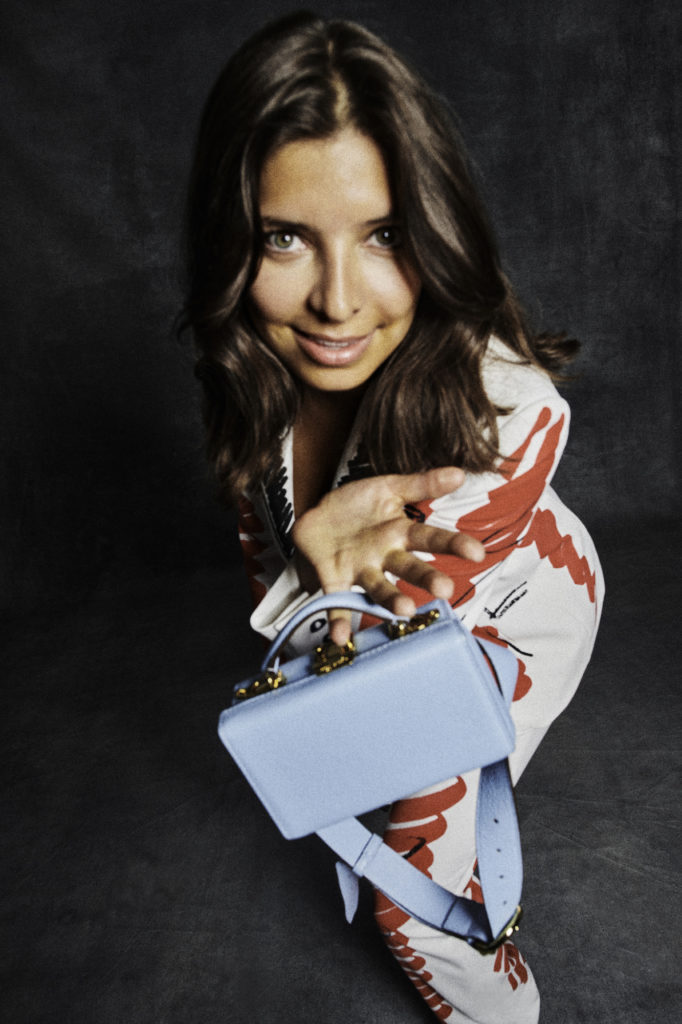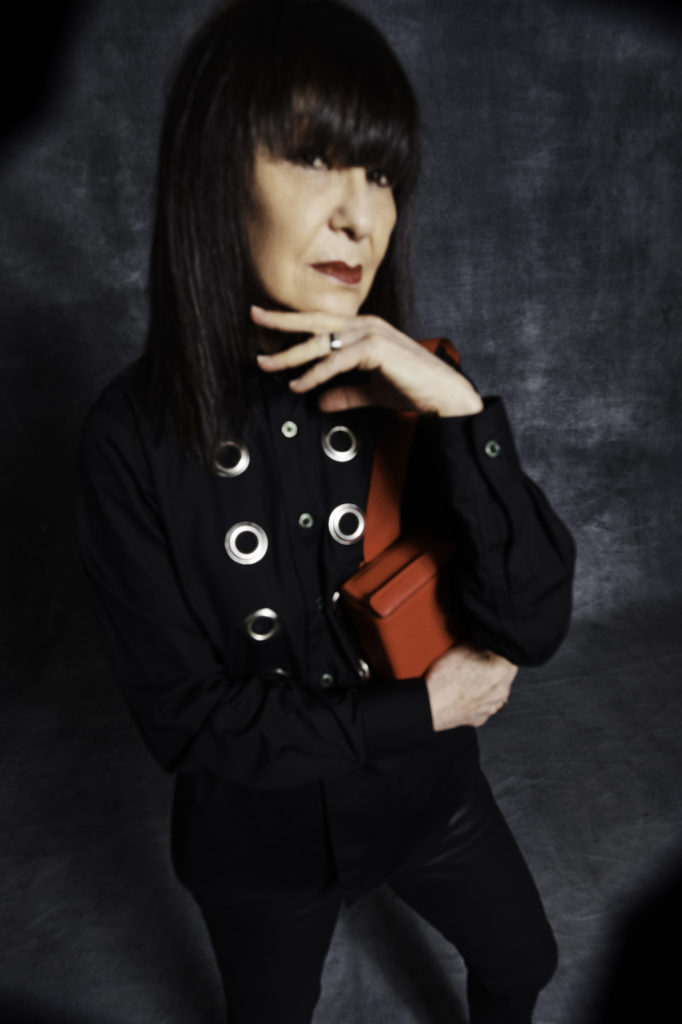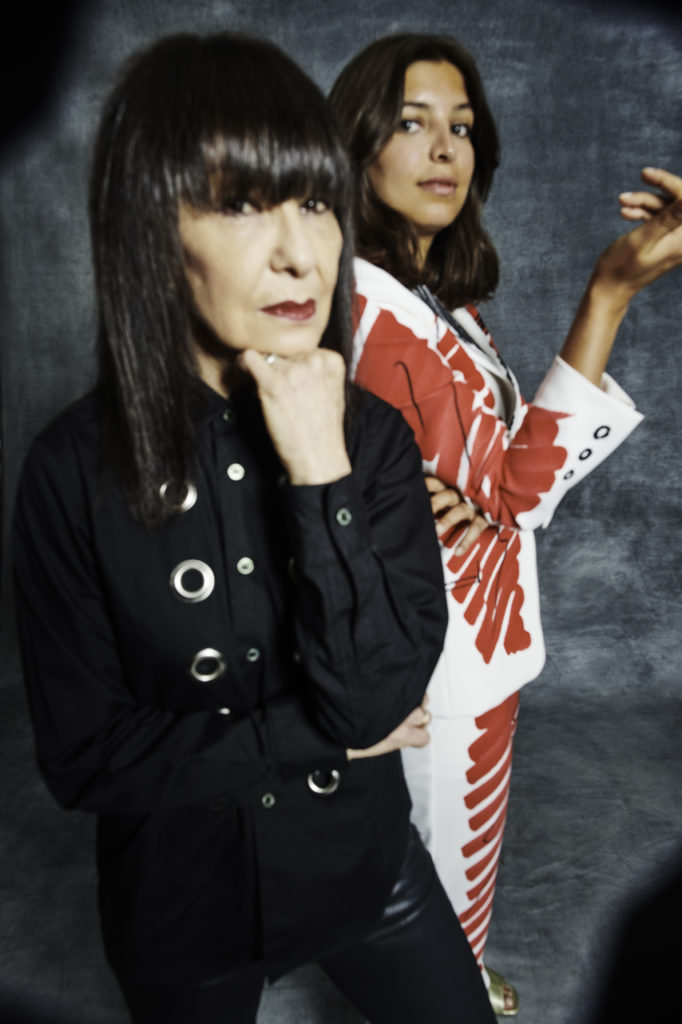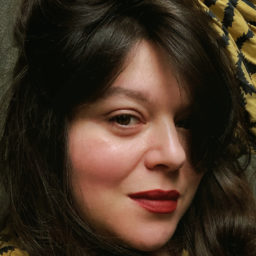“From One Woman to Another,” a five-part series co-produced by artnet News and Mark Cross, features intimate, candid conversations between eminent women at the pinnacle of the art industry and a mentor or protégé of their choosing, paired with original photography by David Lipman.
In the second installment of the series, artnet News’s Noor Brara interviewed independent curator Roya Sachs and her mentor, RoseLee Goldberg, the curator, art critic, and founder of the performance art biennial Performa.
Somewhere at the top of the list of “cool girls” in the New York art industry sits 28-year-old Roya Sachs.
Though she comes from a storied art world family—her father is the Swiss artist Rolf Sachs, and her art-collecting grandfather was photographer Gunter Sachs (who was married for a time to Brigitte Bardot)—Sachs has carved her own path as an independent curator specializing in performance art.
Currently the head curator of the Lever House Art Collection and the founder of Triadic, a multidisciplinary arts group, Roya has produced cutting-edge shows that often incorporate technology, live music, and new media for such organizations as Google, Spring Place, and the New York City Ballet, as well as for traditional galleries and museums.
Given their shared interests, it comes as no surprise that Sachs’s mentor is RoseLee Goldberg, New York’s reigning doyenne of performance art, and—as a curator, art critic, and author—one of the original art-world multihyphenates, who just so happens to also have a spectacular sense of style.
The two met some years ago and bonded over their love of Bauhaus performance art, traveling, and a shared global perspective. We spoke to Sachs and Goldberg about how they inspire one another, what performance art has come to mean for the art world, and what advice they have for young women working in the industry today.
How did you meet each other, and how did your relationship develop into that of mentor and protégé?
Roya Sachs: We first met at Jeanne Greenberg’s gallery, Salon 94, through an ex-Performa board member, Aditya Julka. He had come to one of my performances, which was a kind of opera, dance, and live music performance, and afterwards said, “You really need to meet RoseLee.” So when we found ourselves at the same gallery opening we connected and exchanged details.
I think a little time passed before I saw RoseLee again, at Art Basel in Miami. Then, after that, I started having more conversations with the whole Performa team and RoseLee, and I started getting more involved with the Performa Visionaries group.
There were only so many people working in New York very specifically in performance art, so when we connected, it rapidly opened up this trove of mutual creative passion between us. Our relationship evolved pretty organically—RoseLee started coming to my events, and I started attending all of Performa’s shows. Of course, I’d always really admired and looked up to the work that RoseLee had done, and the way she brings different creative minds and fields together. That was something that was always important to me in my practice. How do you evolve, and how do you constantly change things? Performa is a constantly evolving machine, and a place artists go to for support. That was something that really drew me to RoseLee and what she had created.
RoseLee Goldberg: Just so you know, Jeanne was a Performa board member at the time, too. It all comes back to that wonderful description of Roya’s, about how we like to expand on the different connections between people. That’s something I’ve always tried to do—I’ve always wanted to establish this community of people who can have larger conversations about what’s happening.
One of the reasons I started Performa in 2005 was to capture that sense of going from one place to the next in New York and having really engaging conversations of what was going on around you. It was less about the social environment and more about the content of what was being talked about, and that’s how Roya and I connected. We didn’t just say hello at that opening, but, really instantly, we got into strategic and thoughtful conversations about what we were trying to do. Now the relationship has been developing for at least five years now, and we’ve traveled together, too. Last year, I was invited to Taiwan, and I said to her, “Okay, you’re coming!” Discovering a travel companion is one of the greatest parts of friendship, and Roya and I had this really extraordinary time together.
Sachs: It was really, really fun.
Roya, you had been following RoseLee’s work for quite some time through necessity, since she was one of the pioneers of performance art in New York. But RoseLee, what do you recall about first encountering Roya’s work, with her being a young curator in the same discipline?
Goldberg: You know, I see a lot of work, and I’ve been doing this forever. Often when you meet somebody in this particular world, it can be a little unnerving in terms of: how am I going to respond to what they do? The relief and excitement that I felt when I saw what Roya was doing came from the quality of her work and the thinking behind that work. It’s a new field for a lot of people, so to actually have somebody who’s both a curator and a producer was fascinating to see. It’s something Performa is developing as a career path, and here was somebody who was already moving in that direction.
RoseLee, what have you learned from Roya, and what have you tried to teach her?
Goldberg: I don’t think one consciously does any of the above. It’s more an idea of starting conversations that make it possible to delve into the larger questions. Roya and I are always asking those questions. What is the meaning of this work? How do we reach a larger public with the work? That’s been a huge part of our conversation. Actually, Roya, I’ve never quite asked you when you became so obsessed with Bauhaus, which became a bridge for our conversation as she was building this production related to Oskar Schlemmer, which she did stunningly. What was the trigger for you?
Sachs: Bauhaus art has always been an important, inspirational chunk of my creativity, partly because I grew up with a father who worked in design and is very Bauhaus-influenced. So it was something I was always aware of. I remember seeing the 1970s Hastings rendition of Schlemmer’s Triadic Ballet that I’d found online, and that was the first time I got a more tactile understanding of Schlemmer’s work. That kind of opened up a treasure chest of discovery that took me down a spiral of research and inspiration, which eventually evolved into the production that we made out of it.
Goldberg: You can tell from the conversation between Roya and I that there’s a really strong sense of history that guides us. I always say that history is my inspiration. Looking back and being inspired—by Bauhaus, by Schlemmer—is really important.
Sachs: That layered perspective is something that you’ve taught me. How do you take a historical movement and make it contemporary? You’ve always pushed me to think this way. We’re not here to copy, but to reimagine and reinvent. A historical movement can inspire you, but how do you transcend it to make it relevant now? RoseLee has a real sensitivity, and that’s why she’s such a good educator. I’ve never felt uncomfortable to ask any questions or pitch any ideas for fear she’ll find it too absurd, because really there’s no such thing as too absurd. That’s what makes RoseLee who she is—her ethos is about giving people the confidence and strength to take those steps, even if you don’t know where they’ll go. My favorite quote of RoseLee’s, which I’ll take to the grave, is “100 percent risk, 100 percent trust.” That pretty much sums it up.
Goldberg: That’s especially important with the projects that we do at Performa, but also with students and with people. Go as far as you can take it. The “100 percent risk, 100 percent trust” thing was really a response to the commissioning process. The artist doesn’t know what they’re going to do when they get a commission, and we don’t know what they’re going to do, and this relationship begins. It could be a two-year process, yet there’s this total understanding that eventually the artist will come through.

Roya Sachs. Photo by David Lipman.
How did you come to fall in love with art in the first place? Why did you found Performa?
Goldberg: You know, it’s interesting, because Roya started by talking about her father, who I’ve met and who is wonderful. She comes out of this art-world background. My own background is quite different.
I grew up in South Africa, and the political side of things there is really critical because I was very aware from a young age what those politics were rooted in, and what was going on. I grew up listening to Zulu radio and watching dance in the street and going down to the beach where there’d be different kinds of musicians from different cultures playing guitars and drum sets, with people wearing Zulu beads and clothing. There was a big Indian population in Durban, where I grew up. That’s where Gandhi spent 25 years. There were people wearing saris and going to the Indian markets, too. And, with all of that, there were the disturbing politics of apartheid.
I was a dancer since I was four, doing ballet and Bharatnatyam, and then I studied art history in high school with an extraordinary teacher before going on to Wits University in Johannesburg, which has a terrific art school. I was dancing and painting and drawing and studying political science. That mesh has been there always—there hasn’t been a moment of my life I can remember where that combination wasn’t present. When I went to London to the Courtauld Institute of Art, I had to make a decision about what to focus on, and that’s when I discovered Schlemmer and his merging of visual art and dance. So that’s my small history.
As for Performa, in 2004, I decided that I was tired of people not understanding the history of performance art. It was a moment in time when I thought performance needed to be a centerpiece of the conversation, as opposed to a sideshow at a biennial. I wanted it to be integral to the conversation. There’s a big history there, and the first book I wrote was about assessing 100 years of performance in the 20th century. Performa has made the point that performance is central to the history of art. Buildings like MoMA are literally being reconfigured to contain that idea, which is very exciting.
Roya, how did your projects with companies like Google and the New York City Ballet come to be, where you are injecting performance art into spaces outside of the art world?
Sachs: I’ve always been interested in the way an audience member engages within a space, so even for one of my earliest shows—I think it was a photography show—I found an opera singer who knew a 19th-century aria that somehow fit with one of the photographs and asked her to come and perform it during the opening, combining that with a contemporary dance. Everything else sort of evolved out of that. One rule I’ve established for myself is that no two projects can ever be the same, because the only way I can grow is to constantly be uncomfortable. What would happen if you put a furniture designer together with a contemporary dancer and an electronic musician? What are the complications that can come out of that?
I am interested in that raw, collaborative essence. In that sense, working with tech companies and classical dance companies has been interesting because we’re really living in the age of entrepreneurs, and artists are creative entrepreneurs as much as businesspeople are. Suddenly we’re in a period where creativity is much more fluid and acceptable and open than ever before, and this allows for a plethora of new conversations and possibilities.
What, to you, is good or meaningful art today?
Goldberg: One looks for a sense of wonder—art that’s accessible but still speaks to you in a different way. To be an artist is to be in a state of freedom, which is really quite extraordinary. In these times we’re living through, it’s more obvious than ever. No one’s going to be satisfied working separately from the world—I think we’re all very engaged in the politics we’re living through every day. That means you’re asking a lot of an artist: to present an idea that is visually extraordinary, that moves us, and that takes an ethical position.
Sachs: I’m thinking about this word “good,” and what great art is, and of course it’s very subjective. But there’s a brutality in the art world where people feel they have the right to say, “this is good” and “this is bad,” even though it’s very personal. I think this relationship between an artwork and an audience member is where “good art” comes in. As an audience member, you’re supposed to react to an expression, so art that allows for a reaction that’s emotional, physical, and mental defines for me the very broad term of “good art.”
What do you think the future of performance art looks like?
Goldberg: Performance has a way of capturing ideas that are very complex. Roya’s description of having an exhibition of photographs become the backdrop for a live performance is one example of that. Somehow those elements and media all add up to tell a much larger story.
If anything, performance really is the medium of the 21st century. We’ve talked a lot about technology, and working with different disciplines. But we’re in a visual art world, and that will always define this work. I was just talking to a terrific Broadway producer yesterday about the difference between theater and performance art. Theater is so bound to narrative and language, and in the end we always look at artists’ performances as primarily visual. This question always comes up: how can you collect performance? My line for many years has been that it’s hiding in plain sight—it’s already in the museum. You just don’t call it performance, you call it Dada poetry, or a video by Carolee Schneeman, or a drawing by Yoko Ono.

RoseLee Goldberg. Photo by David Lipman.
What advice do you give to young women artists and professionals in the art industry?
Sachs: I’m taking notes, RoseLee!
Goldberg: Advice is not something I really give. But I think women artists have always had the freedom to operate in a different way. There are fewer gates that they have to go through, and I don’t think we even bother to notice the gates when we go through them. It’s about a generosity of spirit. Women are extraordinarily generous—there’s a sense of sharing that’s quite remarkable, and that’s been the case art historically. There’s really something phenomenal that’s occurred here in the States since the ‘60s that is essentially American. I don’t think there’s a European equivalent for feminism in the same way.
I’m at a loss for what advice to give to women. I think women lead radical lives. Having children is radical. We lead unconventional lives, and we make it up as we go along because the forms are not as established. The male mold is much harder to break, and I feel for a lot of those guys. Roya, do you have any advice?
Sachs: I definitely agree with this idea of camaraderie, which I love, but I think about it less in terms of female and male. Now more than before, we’re entering a phase where likeminded men and women of my generation are trying to pursue their passions. I’ve found that my peers want me to succeed as much as I want them to succeed. And because we’re entering this very entrepreneurial age, you have the power to mold your own path. Your passion should be the most important part of your professional self-discovery, and you should just chase after that.
Photographer: David Lipman
Art Director: Yulu Serao
Stylist: Melena Lipman
Hair Stylist: Rudy Martins
Makeup: Tina Bech











